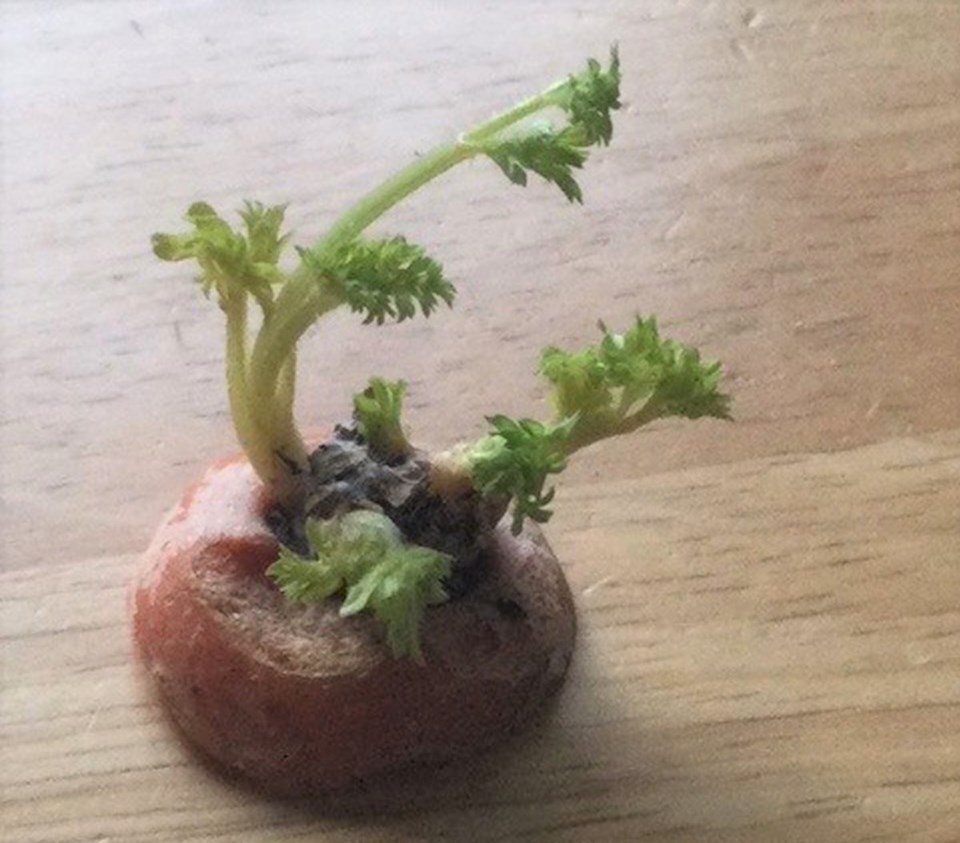YORKTON - What do carrot tops and bonsai have in common? Make a cup of tea and sit down with me for a few minutes and I’ll tell you a story.
A couple weeks back, I was preparing supper and scraping carrots. One of the carrots had started to sprout, and as I cut the top off, I took a close look at it. It was truly beautiful, with the delicate, lacy green leaves emerging from the bright orange top like a forest in miniature. It was too pretty to throw away, so I set it in a small bowl with a bit of water.
(Doesn’t this just show you how eager we are for spring, to see new growth, when even a simple carrot captures our attention? But let me continue.)
When I looked at the carrot top, it looked very much like a very small bonsai. It made me want to learn more about this unique form of “gardening”, so travel with me now to Japan and let’s find out more about bonsai. Before Japanese bonsai there was Chinese penzai: a process where the gardener tried to create a landscape scene in a small dish. But Japanese bonsai focused on a tree, rather than a landscape.
Did you know that there are fifteen basic bonsai “styles”? While bonsai is certainly a creative process for the gardener to express themselves, there are certain styles that we imagine when we hear the word “bonsai”. There is the slanting style of the tree, semi-cascading, windswept, and many more, including the forest style bonsai, yose-ue. This style has multiple trees of various sizes, planted in a staggered pattern to look like a natural forest. It’s fascinating how it can be accomplished! I watched a video online and the gardener used seven maple seedlings, planting them all in a small ceramic planter that was probably six by eight inches and perhaps two or three inches high. It was amazing!
There is a lot more to bonsai than planting seedlings in a container and hoping for the best. Bonsai is a gardening process but it is also an art form, and it can be ongoing for a lifetime.
Bonsai begins with planting the seedling, but there is pruning of the roots and branches; the seedling might have to be wired to achieve a certain shape; and even trimming of the leaves.
Once established, watering is the first and constant requirement; the plant will have to be repotted in time; and gardeners have to be careful of where the dish garden is placed, especially over winter. Our indoor climate with furnaces running, dry air and higher heat may cause problems for the tree’s survival.
There are many bonsai conventions held each year in Japan; the oldest and most prestigious event is the Kokufu Bonsai Exhibition. This show features the efforts of the best and most refined bonsai growers; wouldn’t that be amazing to see!
One of the most touching stories I read was about a 390-year-old bonsai that survived Hiroshima. On August 6, 1945, when an atomic bomb was dropped on Hiroshima, killing over 100,000, the tree survived. The Yamaki family, who had cared for the tree for over five generations, donated it to the United States for the bicentennial in 1976, to be added to the other bonsai trees donated by the Nippon Bonsai Association. The tree now resides in Washington DC, and represents a message of peace.
And I learned all this because of a carrot top! We never stop learning!
Thank you to our friends at YTW for their ongoing commitment to local news. See what’s new with the Yorkton hort society at www.yorktonhort.ca, and have a great week!





